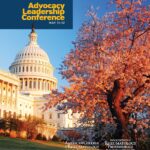Recent #RheumJC chats have included “Favorite Abstracts from the 2017 ACR Annual Meeting” and “Impact of Sustained Remission on the Risk of Serious Infection in Patients with Rheumatoid Arthritis.”
“Because of my involvement in #RheumJC, I’ve been able to curate a great group of colleagues who alert me to important new papers and share relevant news,” Dr. Sufka says.
For those who are new to Twitter, Dr. Sufka says rheumjc.com offers an introductory video by Dr. Collins on how to best utilize the social networking service. One caution: Keep in mind that a 140-character tweet can result in misinterpretation of medical advice.
“Professionally, I use Twitter the most,” Dr. Sufka says. “I think it allows for the most open discussion of any current network, which is important for learning. I don’t keep a separate personal account, so people might also see tweets from me about tech, fitness or just random thoughts.”
Dr. Bhana, who co-founded the #RheumJC chat with Dr. Sufka, says his time spent on Twitter correlates with how much free time he has on a given day.
“I’m online more if I’m in a consumption reading mode or if I’m live tweeting a conference,” Dr. Bhana says.
Unlike other social media outlets, such as LinkedIn or Facebook, Twitter allows users to follow others online without requiring a request or acceptance from other users, which makes it easier to follow colleagues, professional journals and other resources related to your practice.
“On Twitter, I keep in touch with peers I’ve met at conferences and interact with colleagues from all over the world, something I would never be able to do otherwise,” Dr. Bhana says.
While attending medical conferences, Dr. Bhana often live tweets from sessions, taking notes and providing links to them, allowing doctors who couldn’t make it to the conference or attend a specific workshop to gain knowledge virtually.
As more physicians turn to Twitter to communicate, remain up to date on research & stay connected with their peers, some physicians are also using the medium to advocate for change.
Getting the Most Out of Twitter
As more physicians turn to Twitter to communicate, remain up to date on research and stay connected with their peers, some physicians are also using the medium to advocate for change.
Angus Worthing, MD, a rheumatologist at Arthritis and Rheumatism Associates in Washington, D.C., and chair of the Government Affairs Committee for the ACR, has found Twitter an effective advocacy tool for pending legislation.

